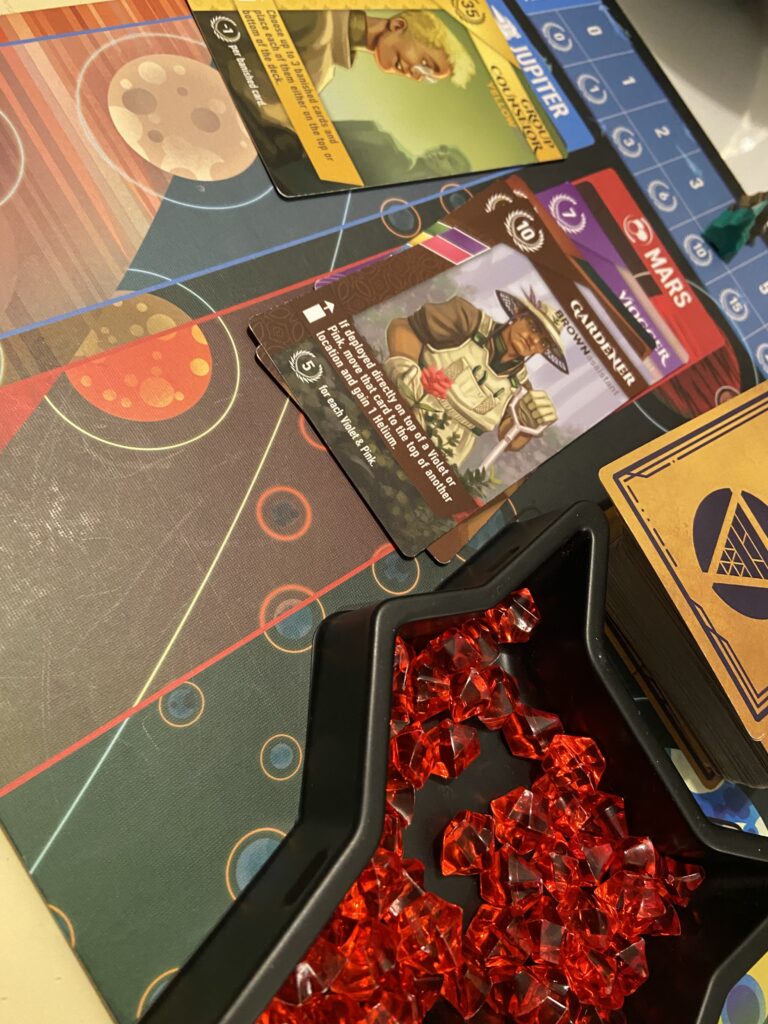This is a series of posts where I play 100 boardgames.

Game: Red Rising
Designer: Alexander Schmidt & Jamey Stegmaier
Year: 2021
Country: U.S.A.
Publisher: Stonemaier Games
The boardgame Red Rising is based on the series of novels by Pierce Brown, about a future in which the people of our solar system have been color coded into castes. I was interested to play this game because I felt that to understand boardgames, I should also try to see them through the lens of individual designers. Somewhat at random, I chose to familiarize myself with the work of Jamey Stegmaier, one of whose games, Viticulture, I’ve already played.
To understand Red Rising better, I started to listen to the audiobook version of the first book in the series, also titled Red Rising. However, so far I’ve only gleaned the basics, so I came to an IP game from the somewhat less than ideal position of not knowing the work it’s based on.
In Red Rising, each player controls a House seeking supremacy by deploying various characters onto the board. The core gameplay is extremely simple: You play a card and pick up a card. It’s very fast to learn and to explain. The complexity is all in the cards, each of which has its own qualities and effects.
We played through the game twice. The first time, I spent much of my time trying to figure out how the cards interacted with each other, but by our second playthrough the game felt much more serious. Because we had a better idea of how to win, we played with intent.
The game’s distinctive characteristic is that the cards in your hand have various victory point values which are calculated at the end. Because each hand is secret from other players, you play the game with only a cursory idea of who’s winning. Some methods of accruing points are public so that you can see who’s doing well, but the points from the cards are extremely important.
This meant that as you play, you don’t know what your opponents are aiming for unless you have serious expertise with the game.
During the game, you mostly have a hand of five cards. At least for me, two or three of the cards are obviously useful for end game purposes, so in practice you only have a few cards to choose from in regards what to play each turn. Often I had four cards locked in my end game gambit, leaving me to play and draw a single card.
This is one of those “easy to learn, hard to master” games. True understanding of strategy flows from knowledge of the cards, and there’s a huge stack of them with intricately designed effects playing on each other. I feel that in our two games, we barely scratched the surface.